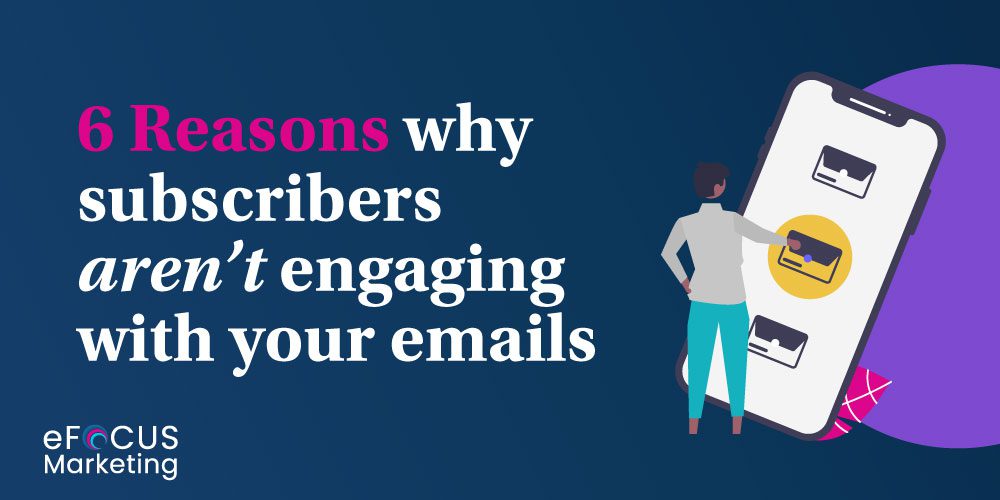Are you sending out newsletters to your subscribers but not seeing the results you’d like? Your opens and clicks are low and conversions are virtually non-existent?
You may have heard the phrase ‘the money is in the list’, and it’s true!
But only if you build your list in the right way with quality interested subscribers AND know how to engage them with the emails you send after they sign up.
Because the work doesn’t just stop when you get them onto your list – this is where the real work, and fun, begins!
So let’s take a look at 6 reasons why subscribers aren’t engaging with your emails right now and what to do about it
1. You don’t have the right people on your list
When it comes to getting subscribers on your list who will engage, it really is about quality over quantity. And that starts with where your sign up is placed and what you are offering.
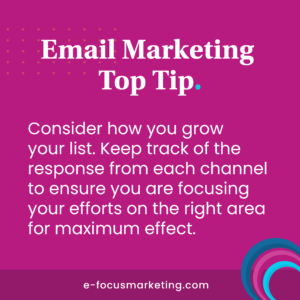 Some people offer opt-in offers (also known as lead magnets) to give people even more reason to give you their email address (a valuable commodity). But you have to make sure that your sign up form, whether it includes an opt in offer or not, appeals to the type of people you want to have on your list; you need to have the right offer or incentive to give them.
Some people offer opt-in offers (also known as lead magnets) to give people even more reason to give you their email address (a valuable commodity). But you have to make sure that your sign up form, whether it includes an opt in offer or not, appeals to the type of people you want to have on your list; you need to have the right offer or incentive to give them.
Focus on the benefits that people will receive when they opt in to receive your emails (not just your opt in offer but the benefits of actually reading your emails!) and setting expectations of what they will receive from you and when after registering.
Without the right people on your list, subscribers aren’t going to engage with your emails going forward because they are probably not really interested in what you do (or not to the level you would like them to be), so this is a crucial first step in creating ongoing engagement.
2. You don’t have a clear plan for your email marketing
Without a clear plan, how can you know where you are going, where you have been and what you want to achieve?
 Without a clear strategy of how you want to use email to underpin every other type of marketing you do and generate sales, you will find yourself foundering and not achieving the results you want. You cannot rely on luck as a strategy.
Without a clear strategy of how you want to use email to underpin every other type of marketing you do and generate sales, you will find yourself foundering and not achieving the results you want. You cannot rely on luck as a strategy.
Start by mapping out your regular newsletters and sales emails for the next 6-12 months on a calendar. Then note down any upcoming events (e.g. Christmas) and add in any emails that you might want to send around these.
Now, there is of course much more to creating a solid email marketing strategy than just this, but doing so will give you the start of a strategy for your manual emails that will keep you on track in the coming months.
3. You’re only sending newsletters
Email marketing is about much more than sending a newsletter – that’s just one type of email you should be sending. Have you thought about using sales emails, specific campaigns, segmentation and the wide array of different automated emails you could implement in your business? There are so many campaigns that businesses should use, including three important automated emails.
When it comes to using email marketing in your business, you need to think outside the box and go beyond just sending a regular, informing newsletters. 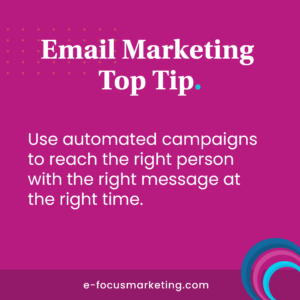
You can seize opportunities to create engagement with automated campaigns. They allow you to send the right message to the right person at the right time. In turn, that helps create some of the highest opens, clicks and conversions that you will see from any of your campaigns.
Start by identifying commonalities between your subscribers for segmentation purposes and the touchpoints that you have with your prospects and customers from which you could trigger a series of emails for maximum impact; for example, triggering a series to send automatically after someone signs up to your list or makes a purchase.
4. You haven’t asked your audience what they would like to receive from you.
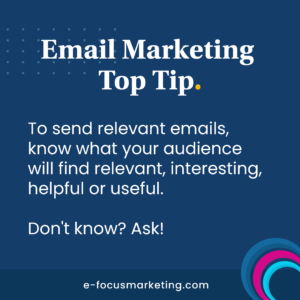 If you don’t know what your list will find relevant, interesting, helpful or useful, how can you provide it?
If you don’t know what your list will find relevant, interesting, helpful or useful, how can you provide it?
This comes back to a basic marketing premise – know who you are targeting, why and how to make them ‘tick’.
You need to know what interests them in order to serve content that will generate results for your business.
Not sure? Send out a survey, engage on social media, scour forums and actually speak to prospects to get a real understanding of them and what they would like from your business.
5. You’re not getting personal
I have a rule (you may have heard me say it before): if it’s in your database you can use it to personalise, segment, target and trigger highly engaging emails to your list.
Creating great email marketing starts with having and using great data
So in order to get personal with your audience, you need to make sure that you are collecting the right data to fulfill your strategy.
This may be in the form of demographic or interest data such as their gender or specific topic/product category interests in your business and needs to be collected from subscribers either on sign up or through the use of surveys (progressive profiling) as your relationship develops.
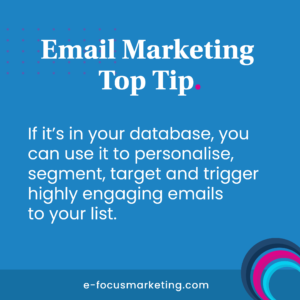 Or there is behavioural data – data you gather by tracking your subscribers behaviour with your emails (which emails they open and click for example) or on your website (requires additional tracking and may include information about which pages they visit or if they abandon their shopping basket without completing the purchase for example)
Or there is behavioural data – data you gather by tracking your subscribers behaviour with your emails (which emails they open and click for example) or on your website (requires additional tracking and may include information about which pages they visit or if they abandon their shopping basket without completing the purchase for example)
Using segmentation you can then utilise this information to identify smaller sets of your list that have commonalities between them, and start to devise specific content that speaks to these different segments of subscribers needs and wants, to provide relevant, targeted emails that are more likely to engage your list.
6. You’re not testing anything
Testing is the one technique GUARANTEED to increase the results and therefore the sales you generate from your email marketing efforts.
 Without testing, how can you ensure that you are providing information that your subscribers want and in a way that encourages engagement and action?
Without testing, how can you ensure that you are providing information that your subscribers want and in a way that encourages engagement and action?
Using A/B split testing you can find out the answers to all your questions such as, when is the best time to send an email, what content do my subscribers engage with the most, what type of subject line gets me the best open rates, and many more.
But remember, only test one element at a time so that you know which change has made a difference to your results.
Overall, follow your results! If you see a decline in your opens, clicks or conversions or they’re just not as high as you would like them to be, make sure you’re not making the mistakes listed above.
Now I want to hear from you!
Let me know in the comments below, what are you doing to make sure that the emails you send are truly engaging your audience?

